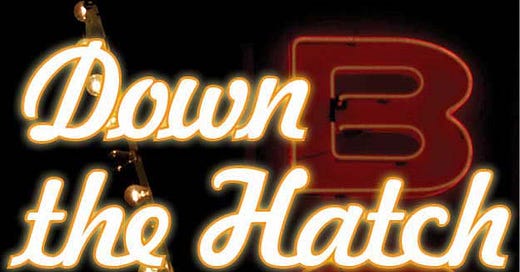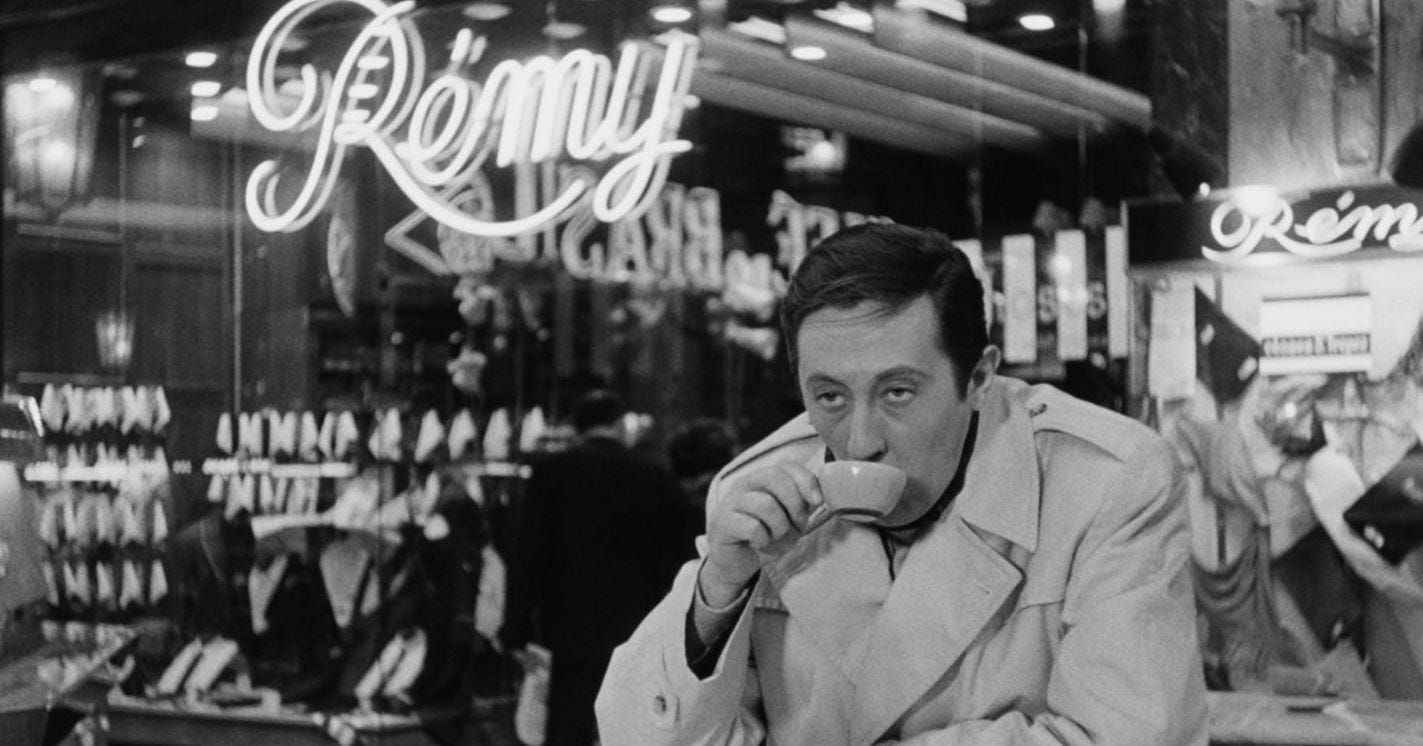Ten years ago this week, I published my first book. Down the Hatch: One Man’s One Year Odyssey Through Classic Cocktail Recipes and Lore was released exclusively for the Amazon Kindle in 2013.
I considered a few options for marking the occasion. Maybe a revised edition? Or how about the long-threatened Volume 2? You’ve got enough material.
In the end, I kept it simple and passed the savings on to you. From now through Sunday, the book is on sale for a mere ninety-nine cents. Jump on it now, because it will never be this cheap again. Until 2033, that is.
Down the Hatch collects the first fifty-two Cocktail of the Week posts that appeared on my blog. As I explain in the book’s introduction, I had no intention of making this a recurring feature. But that debut entry received enough reaction to prompt me to continue, and the posts took on a life of their own. They were mentioned in Slate and USA Today, cited in Reddit’s r/cocktails thread and on Wikipedia. They led to opportunities to write about cocktails and spirits for several publications.
Collecting the first year of essays allowed me to dip a toe into self-publishing. The gorgeous cover came courtesy of my Noir City magazine colleague, ace designer Michael Kronenberg, and several writers, among them Rosie Schaap (Drinking with Men) and gaz regan (The Joy of Mixology), went out of their way to provide this then-total-novice with blurbs. The annual proceeds usually cover a cocktail or two.
A lot has changed in the ten years since Down the Hatch came out. I stopped shaking my martinis, for one thing; it took a while for me to shed the James Bond influence. (See below for the current house recipe.) But the Zig Zag Café, which sparked my interest in cocktails, is still going strong. For that matter, so is my interest in cocktails. You can read about the early days of that interest for less than a buck, if you act now.
What I’m Reading
Zach Baron’s profile of Martin Scorsese for GQ has generated attention, as usual, for Scorsese’s comments on the state of contemporary cinema. (For what it’s worth, I agree with him.) But it has stuck with me because of Scorsese’s forthrightness in discussing aging—“Once you know that you gotta let go and you’re going to die, everything changes”—and the difficulty of coming to understand that “just existing for the moment” is not wasting time: “Just exist. Look out the window and see half a tree.”
What I’m Watching
Symphony for a Massacre (1963). More than one of my spies tipped me that a restoration of this film was streaming on the service Kanopy. Multiple recommendations bump a movie to the top of the list.
It’s French noir at its driest and most intense, which is to be expected given the talent behind the camera. Director Jacques Deray is known for his work with Alain Delon (La Piscine), Jean-Paul Belmondo (Le Marginal), or both (Borsalino). His cowriters are Claude Sautet, whose noir bona fides as a director include Classes tous risques and Max and the Junkmen, and José Giovanni, a man whose extraordinary life—criminal, collaborator during World War II, then novelist and filmmaker—was definitively chronicled by Imogen Sara Smith in not one but two articles for Noir City magazine.
The plot couldn’t be simpler. Five men throw in on a drug deal. One of them sees a way to screw his partners. Things don’t go as planned. The script maximizes the suspense, setting up every twist beautifully and delivering an ironic ending. Deray’s on-the-fly location filming lends the action an immediacy. Jean Rochefort, best known as a comic actor, plays the schemer of the quintet, his placid features deployed to potent effect.
As if that weren’t enough to recommend Symphony, there’s the boundless Gallic atmosphere. Ads for Suze at the side of the road. Rochefort’s apartment, located above what looks like a sprawling, high-end version of Los Angeles’s Grand Central Market. The club where the characters congregate features dancing on the second floor, to a band that apparently knows only one song. Even better, the seats at the bar are actual swings. (No doubt the menus include the line, “Please do not ask the staff for a push.”) It joins the list of fictional establishments where I’d love to have a drink, alongside the roadhouses from Twin Peaks and, well, Road House (1948).
What I’m Drinking
When it comes to martinis, none of that apocryphal Winston Churchill nonsense about glancing across the room at the vermouth. You want a glass of gin? Fantastic. Just don’t call it a martini.
I like vermouth. So much so that I use two of them in martinis. Plus bitters, which were in the drink from the beginning. And twists over olives every time.
The Martini: Chez K edition
2 oz. gin
½ oz. dry vermouth
¼ oz. blanc vermouth
2 dashes bitters (in order of preference: grapefruit, orange, celery)
Stir. Strain. Garnish with a lemon twist.






Bought it! Thanks so much!